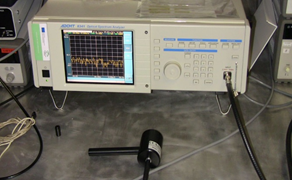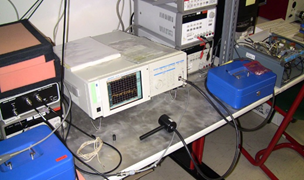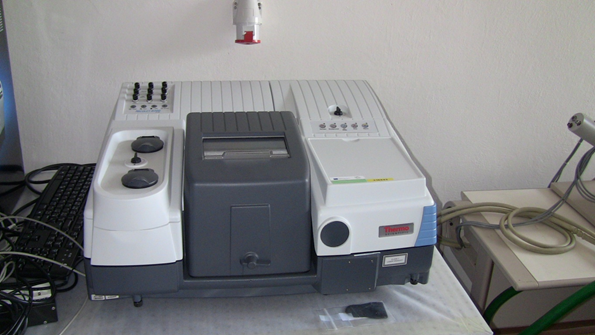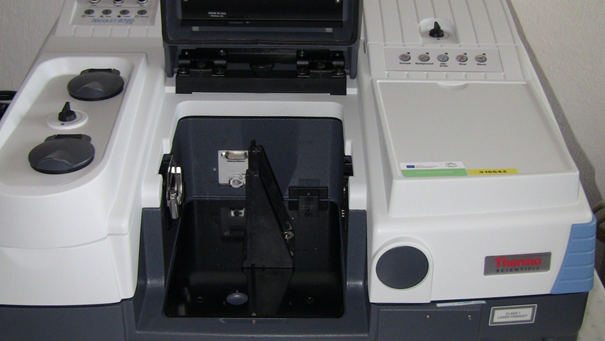This laboratory deals with contactless non-destructive material surface investigation using, among others, AFM and SEM microscopy and interferometry. Main goals are acquisition of topography, local spectroscopy and fluorescence of semiconductor surfaces.
Laboratory equipment
Optical spectrum analyser
ROHDE & SCHWARZ ADCMT 8341.
An optical spectrum analyser manufactured by ROHDE & SCHWARZ, model ADCMT 8341, was purchased as part of a tender procedure. The optical analyser is used for measuring the wavelength and optical power from multiple wavelengths of an optical signal. This instrument enables fast and accurate testing of laser diodes. The 8341 optical spectrum analyser is based on the Michelson interferometer principle and offers the fastest measurement with an interval of only 0.5 s. The 8341 is a compact laboratory instrument equipped with a well-arranged display and all necessary common interfaces.
The optical spectrum analyser will be used to measure spectral characteristics according to the power distribution in the optical spectrum of, for example, laser diodes and other elements using the same physical principle.


Optical spectrum analyser ROHDE & SCHWARZ ADCMT 8341
FT-NIR spectrometer
FTIR spectrometer Nicolet 8700.
The Nicolet 8700 FTIR spectrometer is a variable spectrometer system suitable for the widest range of analytical applications. Its exceptional optical performance is due to the combination of the latest DSP (Digital Signal Processing) control technology with internal intelligence and a unique optical bench layout. The Vectra-Piezo interferometer allows the Nicolet 8700 system a spectral resolution of 0.09 cm-1. The special design of the interferometer, originally developed for the US Army Air Force, ensures its reliability.
The observed spectra provide information about the type of chemical bonds present in the material and thus serve directly to identify the individual components in the substance under investigation. In particular, FT-IR spectroscopy is suitable for the identification and structural characterisation of organic substances; however, it can also be used for inorganic substances. In contrast to dielectric relaxation spectroscopy, the observed maxima are very narrow, which greatly simplifies their analysis. The analysis is usually carried out by comparison of the observed infrared spectrum with a library (database) of already identified peaks (maxima).
The purchased instrument is very convenient for the diagnosis of polymeric materials and composites and has greatly expanded the possibility to diagnose very small polar or non-polar bonds. This analysis is then necessary to understand the physical parameters of the materials. This instrument is most widely used to diagnose the individual layers of solar cells, which are currently within their development phase.


FTIR spectrometer